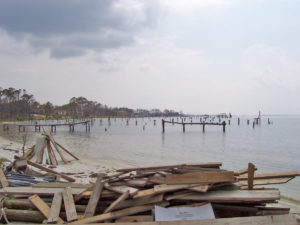Let’s Make Puerto Rico The Poster Child for 100% Fossil-Free
Seize the opportunity!
Tragic as it is, the wipeout of Puerto Rico’s fossil-based infrastructure via Hurricane Maria creates a powerful opportunity to do it right the second time. With its vast solar and wind resources, why not make this sunny, breezy island the pilot project to develop 100% renewability in buildings for a populous island—using microgrids to build in resiliency, so if part of the system goes down, the rest still delivers power?

There’s already at least one island country we’ve all heard of that is near-100% renewable if you don’t count vehicles: Iceland (hydro and geothermal). Solar/electric entrepreneur Elon Musk has already converted several tiny, obscure islands, like Ta’u in American Samoa, and he says he can scale up to serve the 3,670,243 Puerto Ricans.
Of course, converting PR to renewables requires the re-invention of funding. We need mechanisms that allow a bankrupt country (technically part of the US) to front-load a huge infrastructure and then repay out of savings even when many pressing needs will be competing for those funds. The private sector won’t step up if they don’t have complete confidence that they’ll get paid back. Eco-economists, this is your moment!
But also, justice demands that a big chunk of financing come from outright grants, from the US government and various foundations and disaster relief agencies—just is occurred in storm recovery after other superstorms like Katrina, Rita, Sandy, and Irene. Even the heartless occupant of the White House, possibly the least compassionate and least competent man ever to hold that office, must not be allowed to marginalize Puerto Rico just because the population is Latina/Latino and the language is Spanish.
And wouldn’t it be cool if someone (Elon Musk perhaps?) stepped forward to fund a switch of the vehicle fleet to non-carbon-emitting sources? If the island had solar on every sunny room, it would be easy enough to supply the vehicles as well.
In some ways, converting the entire island to clean, renewable, resilient energy would actually make rebuilding cheaper and easier. Fossil fuel infrastructure is expensive, complex, and subject to environmental catastrophe. But if the money that would have gone to build tanker ports and refineries went to establishing on-island solar panel factories and training installers and to bringing in the raw materials to make millions of high-efficiency panels to deploy in every neighborhood in the Commonwealth, it’s doable.
I’m not the only and certainly not the first to say this. In addition to Musk, Time Magazine, Renewable Energy World, safe energy activist/author Harvey Wasserman, the deep-story news outlet Democracy Now, to name a few, have all said this is possible and desirable.
